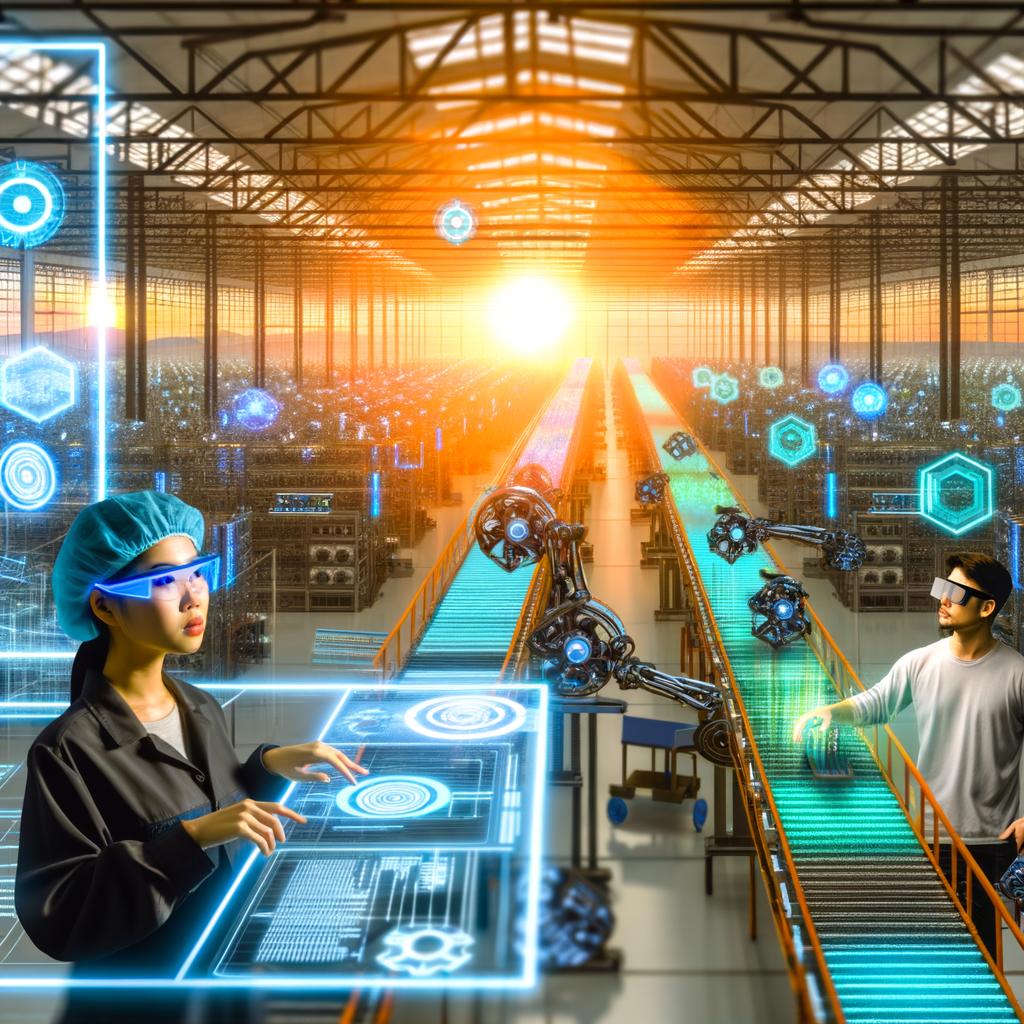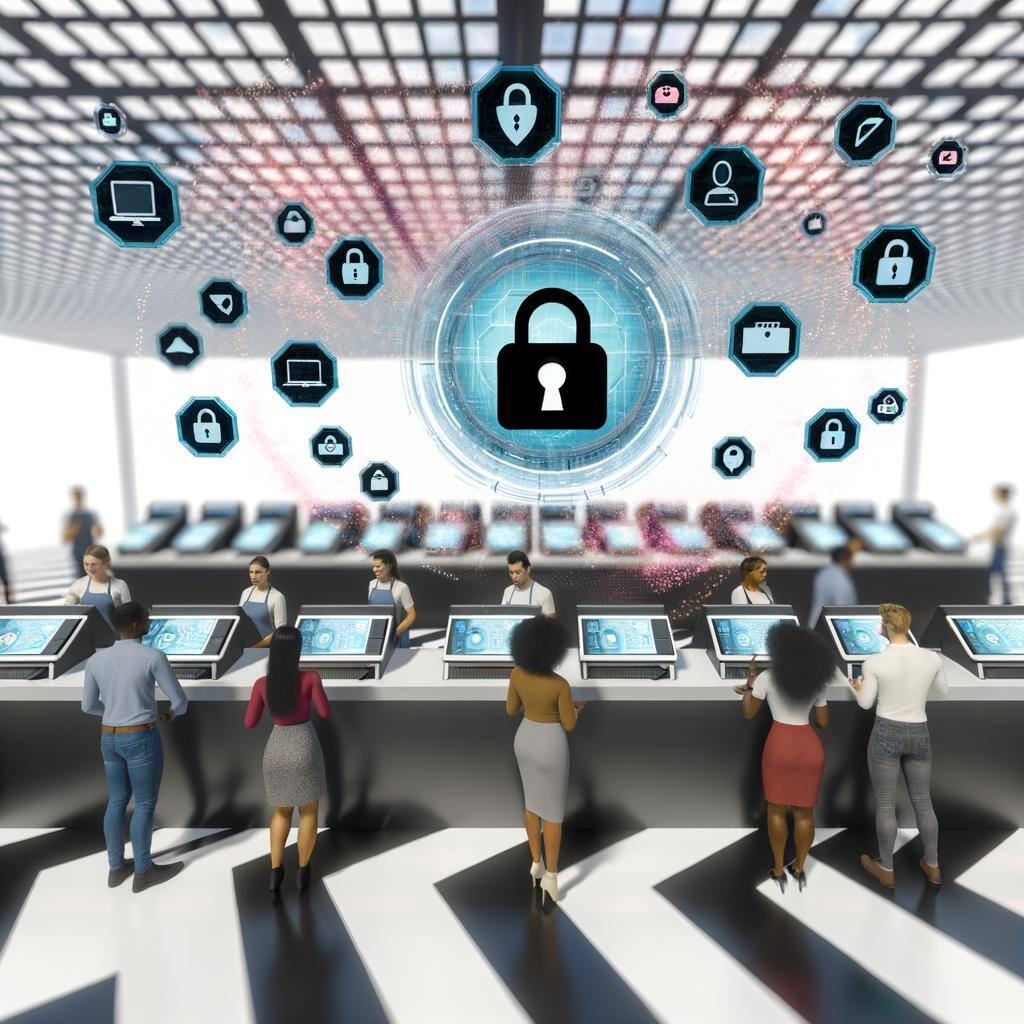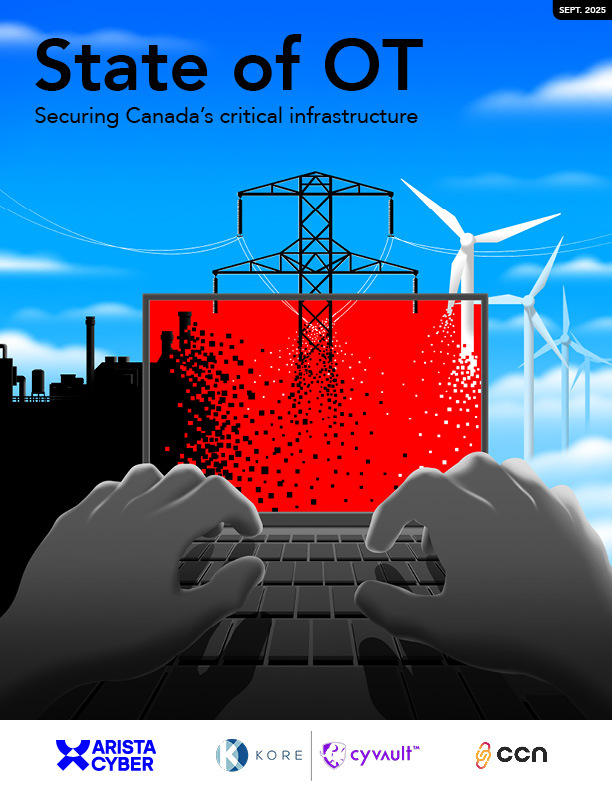Retail security 101: mitigating cybersecurity risks in the digital age
The retail industry has undergone a profound transformation in the last few decades with the advent of digital technology. While these advancements...
5 min read
 Michelle Balderson
:
Apr 28, 2024 12:20:57 PM
Michelle Balderson
:
Apr 28, 2024 12:20:57 PM

The manufacturing industry is in the middle of a revolutionary transformation, propelled by rapid advancements in digital technologies and continuous evolution of the new Industrial revolutions. This shift from traditional methods to digital manufacturing is not just a leap but a necessity driven by the evolving market demands, technological innovations, and the urgent need for businesses to remain competitive. Manufacturing organizations are increasingly accelerating the adoption of digitally transformational technologies and processes. Encompassing their enterprises, corporate environments, distributed manufacturing plants, logistic centers and interconnection of suppliers and customers into a comprehensive ecosystem. This transformation is technical in nature, addressing both the market changes and the specific business needs of the Manufacturing Enterprise, focusing on customer choice while enabling flexibility of the manufacturing process. It is also a cultural change that requires organizations to continually challenge the status quo, experiment, and get comfortable with failure. A foundation based on agile business models of change.
A digital manufacturing plant is a complex ecosystem that integrates Information Technology (IT) and Operational Technology (OT) systems, people, and processes to improve efficiency, productivity, and flexibility. The IT systems oversee data management, analytics, and business intelligence, while OT systems manage direct control of physical devices and processes. This integration allows for real-time monitoring, predictive maintenance, and automated decision-making. A recent study found that unplanned downtime costs industrial manufacturers an estimated USD 50 billion annually and 42% of this unplanned downtime was due to equipment failure1. The processes are redesigned to be agile and adaptable, leveraging Artificial Intelligence, digital twins, augmented reality, and advanced simulation techniques for planning and execution.
Since the debut of Industry 4.0 in 2010, the landscape of manufacturing choices has undergone rapid and profound evolution. The adoption of this framework marked the beginning of a new era characterized by smart factories and the Internet of Things, ushering in unprecedented levels of operational efficiency and data-driven decision-making. Shortly after, the industry witnessed a swift transition into Industry 5.0, which sought to harmonize the capabilities of advanced technologies with the creativity and craftsmanship of human workers. The pace of change continues to accelerate, with the conceptual horizon of Industry 6.0 already in view, promising even deeper integration of technology into everyday life and further blurring the lines between digital and physical worlds.
Industrial Revolutions
Industry 4.0, also known as the Fourth Industrial Revolution, emphasizes the idea of "smart factories" where machines are connected as a cohesive system that can visualize the entire production chain and make decisions on its own. It leverages technologies such as the Internet of Things (IoT), big data, artificial intelligence, and cloud computing.
Industry 5.0 builds upon Industry 4.0 but shifts the focus from technology and efficiency to include human creativity and collaboration, emphasizing the coexistence of humans and smart systems in the workplace. It aims for a sustainable, human-centric approach in manufacturing processes.
Given this progression, Industry 6.0 could hypothetically emphasize even further advancements that integrate technology into human life and the natural environment, potentially focusing on areas such as:
Digital workforce Transformation:
Digital workforce transformation is a cornerstone of the broader digital transformation of industry, representing a paradigm shift in how work is performed and managed. As industries integrate advanced technologies such as artificial intelligence, machine learning, and robotics into their operations, the workforce must also evolve. This involves not only reskilling and upskilling employees to thrive alongside these innovations but also embracing a culture of continuous learning and adaptability. Digital transformation in the workplace goes beyond technological upgrades; it's about fostering a digitally savvy mindset where collaborative tools, data-driven decision-making, and innovative platforms empower workers to achieve higher productivity and engagement. In doing so, industries can harness the full potential of their human and digital resources to drive growth, enhance efficiency, and maintain competitive advantage in a rapidly changing economic landscape.
Non-proprietary system assets, Standardization and Virtualized Environments:
The evolution from proprietary to non-proprietary system assets within industrial control systems marks a pivotal transition in the digital transformation journey. This shift reflects a move from traditional, often siloed, hardware to a more integrated and virtualized environment. Virtual PLCs (Programmable Logic Controllers), RTUs (Remote Terminal Units), and IEDs (Intelligent Electronic Devices) embody this transformation, leveraging virtualization technology to allow for greater flexibility, scalability, and interoperability. By adopting virtual counterparts of these critical devices, industries are able to streamline their operations, reduce dependency on physical hardware, and improve responsiveness. This also opens up avenues for more robust data analytics, predictive maintenance, and remote management capabilities, ultimately leading to optimized process control and enhanced operational efficiency. The move towards a non-proprietary asset base is more than a technological upgrade; it is a strategic reorientation that positions industries to capitalize on the full spectrum of benefits offered by Industry evolution.
Hardware Components: Homogeneous assets in IT hardware refers to servers, storage devices, or network components that are of the same make and model, offering uniform performance and capabilities. This uniformity simplifies the complexity of maintenance, troubleshooting, and scaling.
Software and Platforms: In software terms, homogeneous environments consist of applications, operating systems, or development platforms that are consistent across the IT and OT infrastructure. This uniformity can reduce complexity in software deployment, management, and integration.
Cloud and Edge compute Resources: Virtual machines (VMs) or containers, are considered homogeneous if they are configured to offer identical environments. This aids in load balancing, auto scaling, and high availability.
Hyper Converge Compute, Storage and Virtualized Environments leading to process control and industrial applications being virtualized to help reduce cost, deploy less equipment and interface compute directly into Input and Output Networks (I/O) or the complete adoption of Industrial Ethernet directed to all connected assets.
The concept of “Antifragility” is a property of systems in which they increase in capability to thrive as a result of stressors, shocks, volatility, noise, mistakes, faults, attacks, or failures. Antifragility, rather than resiliency, leads to development of systems and systems of systems that are designed to address faults and failures in a continuous nonfragile manner.
Deep Integration of AI in Daily Life and Work: Beyond automation and efficiency, AI could seamlessly augment human intelligence in more personal, creative, and ethical ways.
Sustainability and Environmental Harmony: Technology might evolve to not just minimize harm but actively improve and restore the natural environment, aiming for a net-positive impact on the planet.
Advanced Material and Energy Use: The development and widespread adoption of new materials and energy sources that are completely renewable, efficient, and non-polluting.
Human Augmentation: The integration of technology within the human body to enhance physical and cognitive abilities, potentially blurring the lines between biological and artificial.
The need for Security Integration:
For existing manufacturing environments, the transition to digital can be facilitated through the segmentation of networks into zones and conduits, enhancing security and operational efficiency. This approach allows manufacturers to integrate innovative technologies within their current infrastructure, minimizing disruptions and optimizing resource use. The zones and conduits model establishes clear boundaries for data and control flows, ensuring that security and operational integrity are maintained.
Identity and Access Management (IAM) is crucial for the success of digital transformation in manufacturing. As the digital landscape expands, so does the attack surface for potential security threats. IAM solutions ensure that only authorized users can access critical systems and data, mitigating the risk of data breaches and ensuring compliance with regulatory standards.
The Importance of Security and Controls, In the digital manufacturing environment, security transcends traditional IT concerns, encompassing physical security and the integrity of the OT systems, along with Safety. The evolution of IT and OT systems necessitates comprehensive security controls, including network segmentation, access control, and real-time monitoring, to protect against both cyber and physical threats.
Hybrid cloud and edge computing architectures are ideal for digital transformation in manufacturing, offering the flexibility to process data both on-premises and in the cloud. Sensors and actuators, integral components of the Industrial Internet of Things (IIoT), generate vast amounts of data that can be analyzed in real-time to make data-driven decisions. This infrastructure supports the agility and scalability required for modern manufacturing processes.
Embracing digital transformation in manufacturing is a strategic endeavor, a leap into a future where digital and physical blend, driving efficiency, sustainability, and a human-centric focus. This digital transformation reimagines manufacturing as a pivot to advanced technology and human creativity, shaping resilient, productive, and sustainable industrial ecosystems. However, in a recent study of more than one hundred senior manufacturing professionals, 96% of companies said that they are using at least one next-generation technology in their organization
References:
1. https://partners.wsj.com/emerson/unlocking-performance/how-manufacturers-can-achieve-top-quartile-performance/
2. https://www.themanufacturer.com/articles/current-state-of-it-ot-convergence-among-manufacturing-organisations-revealed-in-new-report/

The retail industry has undergone a profound transformation in the last few decades with the advent of digital technology. While these advancements...

1 min read
How did you get into cybersecurity? I have over 23 years of technology industry experience and over 28 years business development experience....

Originally published in the When Canadians think of cybersecurity, we picture stolen passwords, hacked emails, or corporate data breaches. But a...